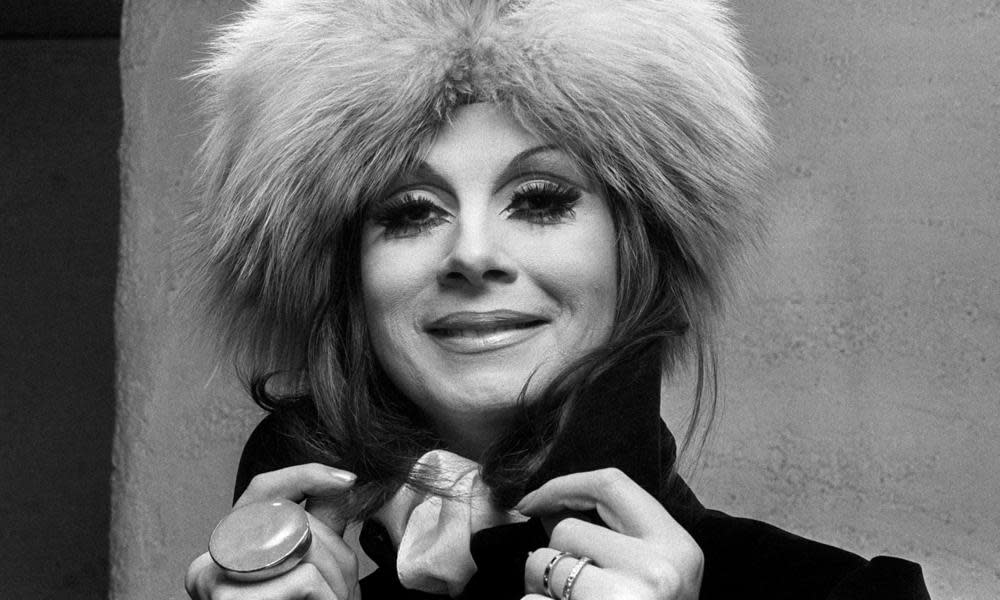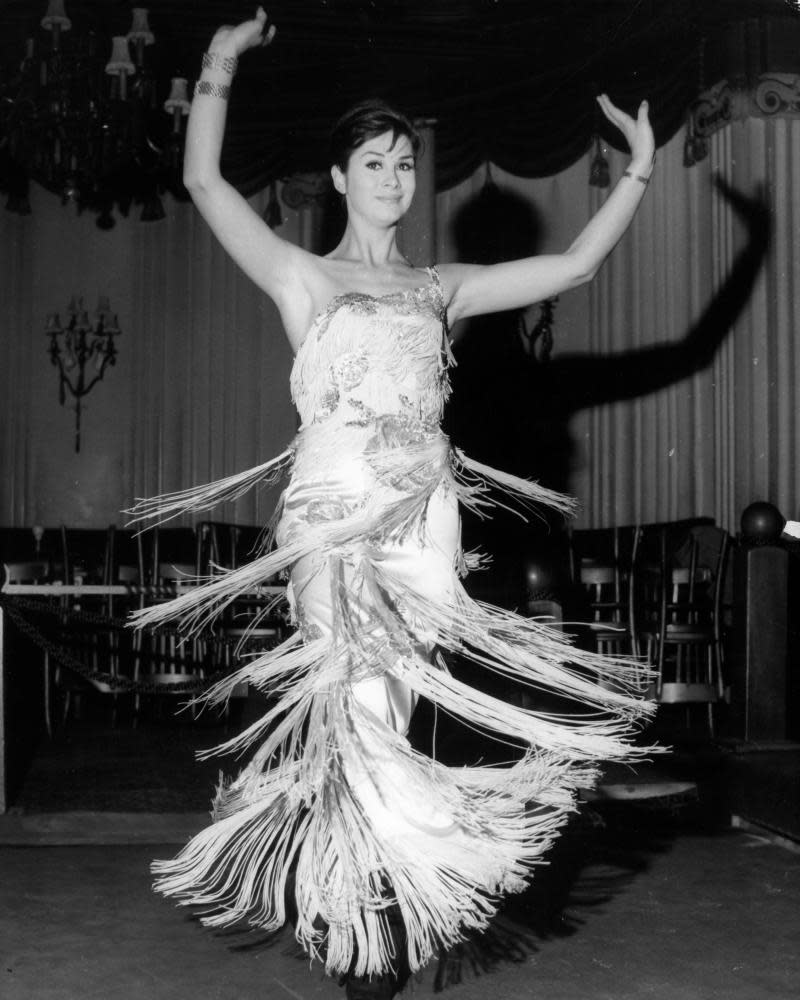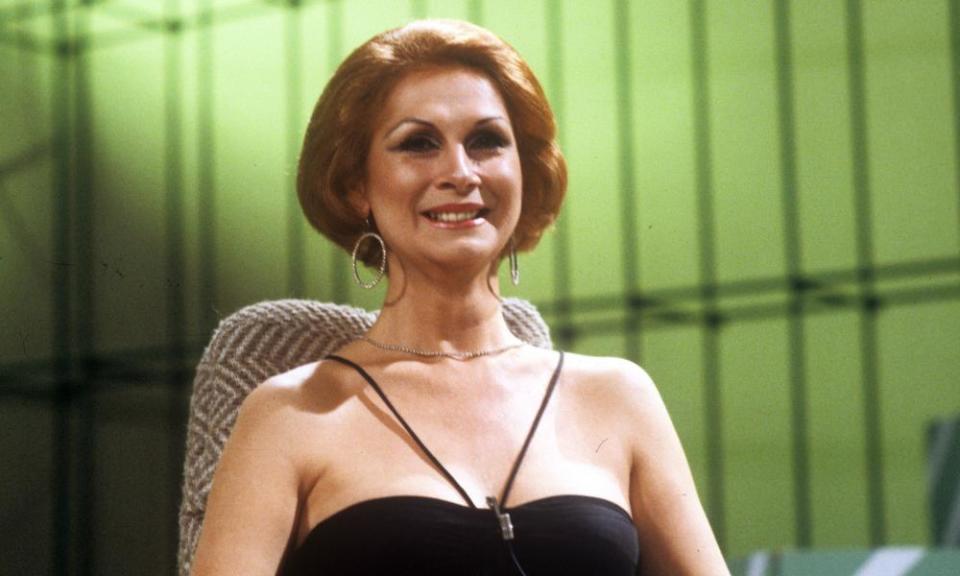April Ashley obituary

Model, dancer and socialite who was one of the earliest people to undergo gender realignment surgery
Most of April Ashley’s 86 years were the hard going of a pioneer’s life, with repeated rejection and scandal-blighted reverses. But she never regretted the day in 1960 when she risked her life to become her true self through gender realignment surgery, among the earliest to undertake such a thing. The operation cost her prolonged pain, besides a difficult-to-raise £2,500, but in old age she said that every morning there was “still a bit of joy left” at the memory of the transformation. As to tough times: “Chins up … be as brave as you can.”
Her beauty, instinctual style and understanding of the artifice of glamour pre-dated the surgery. After it, she briefly had chances as a model, projecting a 1950s soignee manner animated by a new naughtiness; she had an aristo voice and native scouse wit, too. David Bailey, Brian Duffy and Terences Donovan and O’Neill photographed her, even in lingerie; she didn’t hide who she was and how she had become so, and they didn’t care, as Ashley delivered a great picture. She updated her image through life – kook, 60s socialite, private-life professional, and in her late years, carefully edited duchess. Few have ever carried off with grace the gown and squishy headgear of an academic honour, but she did.
As a young adult the released joie de vivre of her changed self made her a welcome good-time girl at any party, and she crossed class and social boundaries as an early celebrity funded by largesse – champagne sent to her table, gifts of clothes and jewels, rides in private jets to swinging places.
All were a huge expansion of life. She had been born in Liverpool and christened George, one of the six children of Frederick Jamieson, a Royal Navy cook, and his wife, Ada (nee Brown). Father was often away at sea and drunk on leave; when Ashley visited his deathbed long afterwards – the first time he had seen her as a woman – he told her “Darling, I always knew” and accepted her. There was not much reconciling with Ada, who had walloped George daily, nor with the siblings who mocked the delicate-featured boy whose voice did not break and whose body grew more physically feminine with adolescence. He prayed nightly to awake as a girl.

At 16, George joined the merchant navy. After attempting suicide on shore leave in Los Angeles, he voluntarily entered a mental hospital in Ormskirk in Lancashire, where he pleaded with doctors to be made more masculine, was treated with hormones and electric shock therapy, and eventually fled to London. When he first dressed as a woman there, he knew he would become one, although not yet how.
On a Paris holiday he fell in with performers who helped him to become a dancer under the name of Tony April, at Le Carrousel nightclub, famous for its transgender cabaret. Its fabulous headliner, Coccinelle, recommended him to the Casablanca clinic of the pioneering surgeon Georges Burou, who took seven hours over a gender realignment operation and greeted the new April Ashley with “Bonjour, Mademoiselle” when she awoke.
Returning to Britain and registered officially as a woman, Ashley was a natural at modelling, and also took a bit part in the film The Road to Hong Kong, starring Bob Hope and Bing Crosby. But in 1961 a friend sold Ashley’s secret to the Sunday People for a fiver, and her name was dropped from the movie’s credits when it came out the following year. Her agency cancelled all bookings and told her she wouldn’t work in the UK again, and indeed when she applied for jobs the response was usually: “We don’t want people like you.”
Ashley eventually found hostess work in nightclubs on the Costa del Sol in Spain, including at the Jacaranda in Marbella, owned by her suitor Arthur Corbett, due to become the next Lord Rowallan, whose compulsion to cross-dressing was ending his first marriage in divorce. They wed in Gibraltar in 1963, but Ashley ran off a fortnight later with the heir to the Duque del Infantado.
In 1966 she demanded maintenance: Corbett counterfiled to have the marriage annulled on the grounds that Ashley was not a woman. The trial lasted three weeks, proceedings took three years, and in 1970 the judge ruled that Ashley “was at all times a male” and there could be no marriage between two men, a precedent that lasted for more than 30 years. Ashley subsequently had a breakdown, but recovered enough to open, with a friend, Desmond Morgan, a Knightsbridge restaurant, April and Desmond’s, where she greeted, and drank with, celebrity customers.

That frenetic life likely provoked a heart attack that sent Ashley into exile in Hay-on-Wye in 1975, where attempts to get off the dole through catering and waitressing work foundered when some of her fellow employees discovered her past and made her feel a freak. In 1986 she followed a new husband, Jeffrey West, to San Diego in California; the marriage ended in 1990, but she stayed on there, spending some time working for Greenpeace before finding a job in a craft gallery. Her Californian co-workers didn’t ask who she was; her story anyway was becoming less exotic.
Ashley yearned to return to the UK, and in 2005 successfully appealed to the deputy prime minister, John Prescott, once a fellow renter in a London boarding house, to grant her a birth certificate recognising her as female; by then the UK had introduced the Gender Recognition Act 2004.

For lack of national insurance paid, her pension was meagre and she lived in straitened circumstances to the end – despite some fees, firmly demanded, from public appearances. Liverpool made her a citizen of honour in 2015, and an exhibition, Portrait of a Lady, ran for 12 months in the same year at the Museum of Liverpool before transferring to London. Her appearance when collecting her MBE for services to transgender equality at Buckingham Palace in 2012 could not have been more regal.
Ashley’s second tell-all memoir, The First Lady, came out in 2006, but it turned out that large sections of it had been taken directly from her first autobiography, April Ashley’s Odyssey, written in 1982 with Duncan Fallowell. When the publisher of the first book spotted the lifts, the second one had to be withdrawn. So she never got the hoped-for biopic, although she did coach the actor Eddie Redmayne in sexy voice timbre and deportment for the film The Danish Girl (2015).
• April Ashley, transgender pioneer, born 29 April 1935; died 27 December 2021

 Yahoo Movies
Yahoo Movies 
